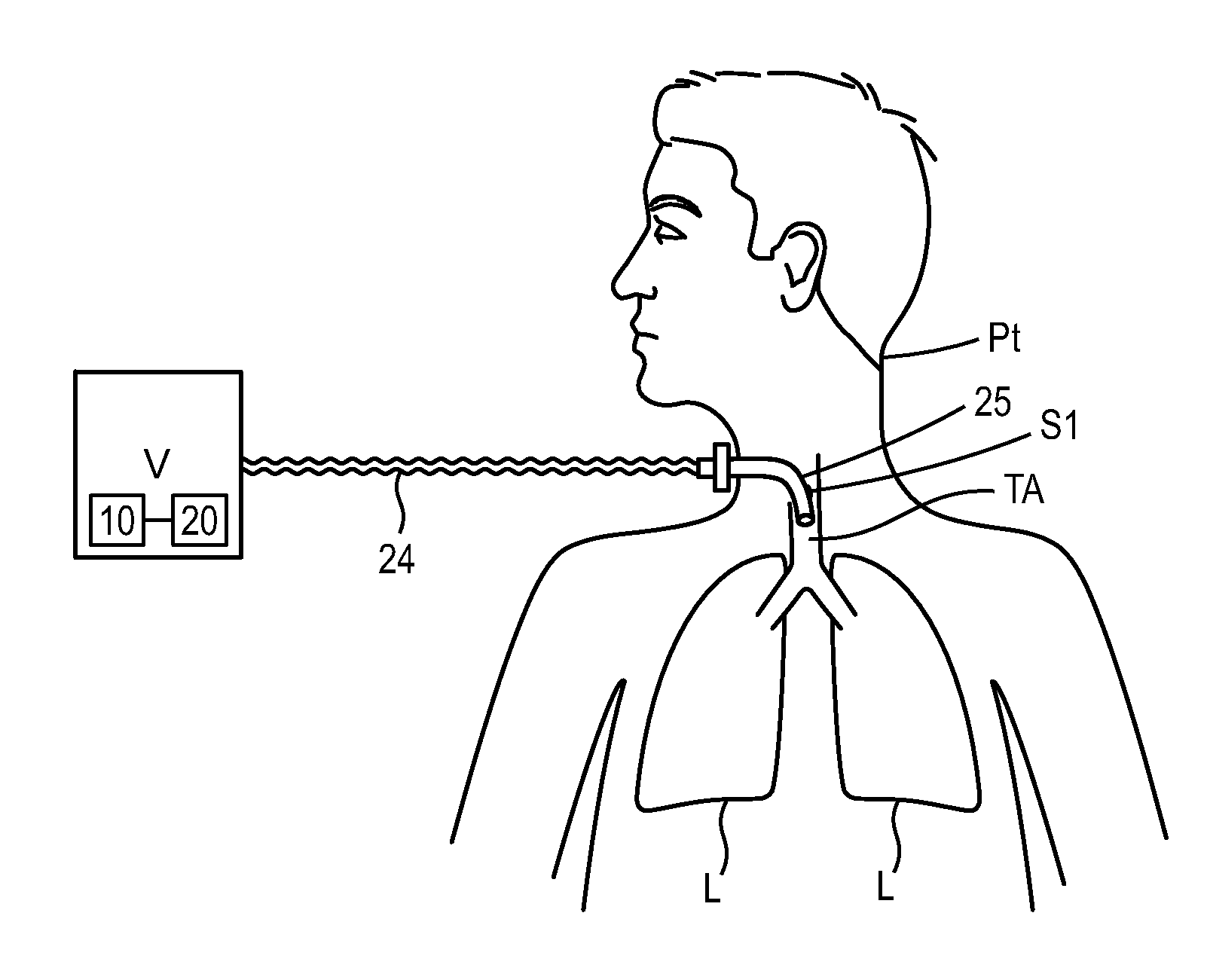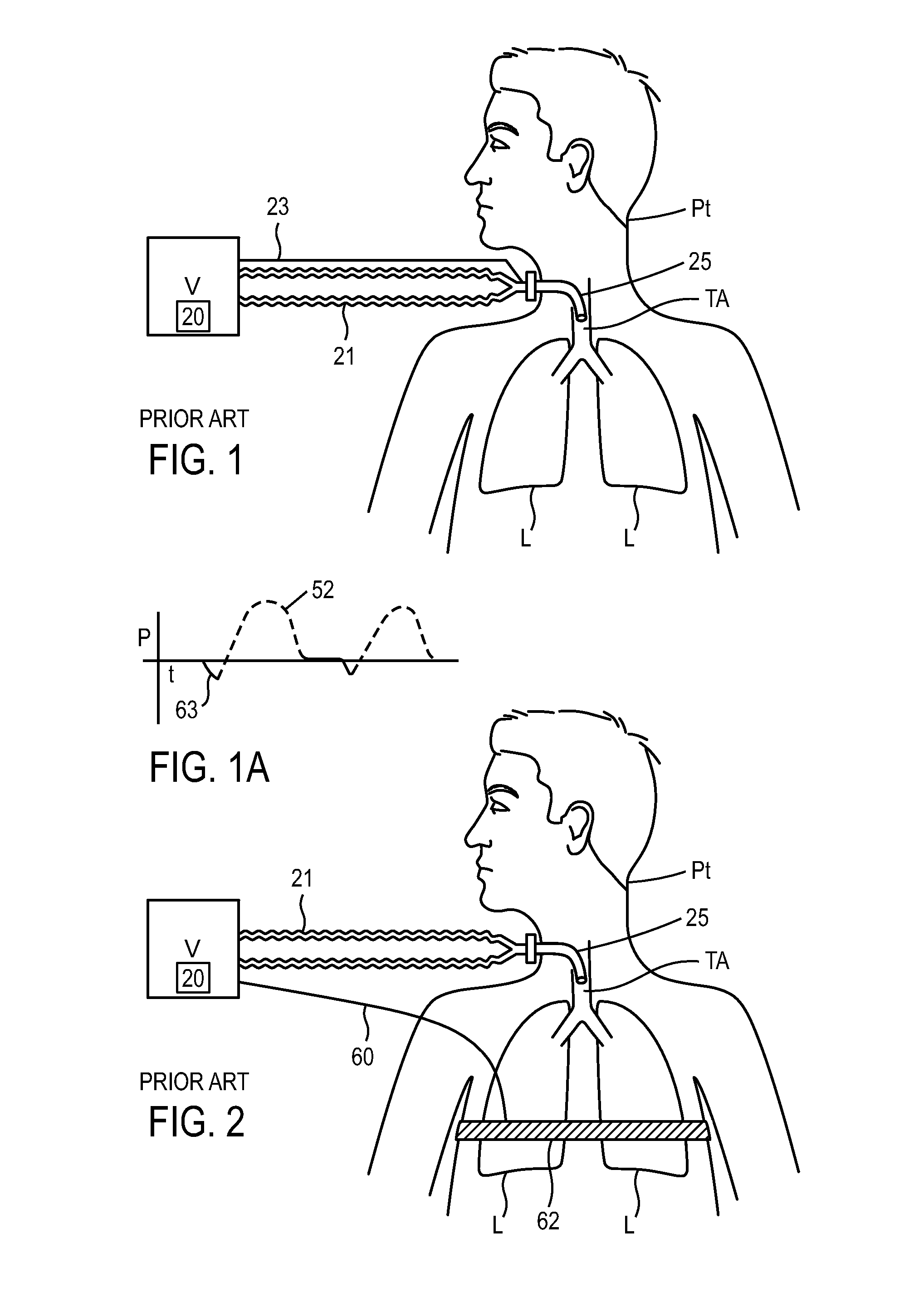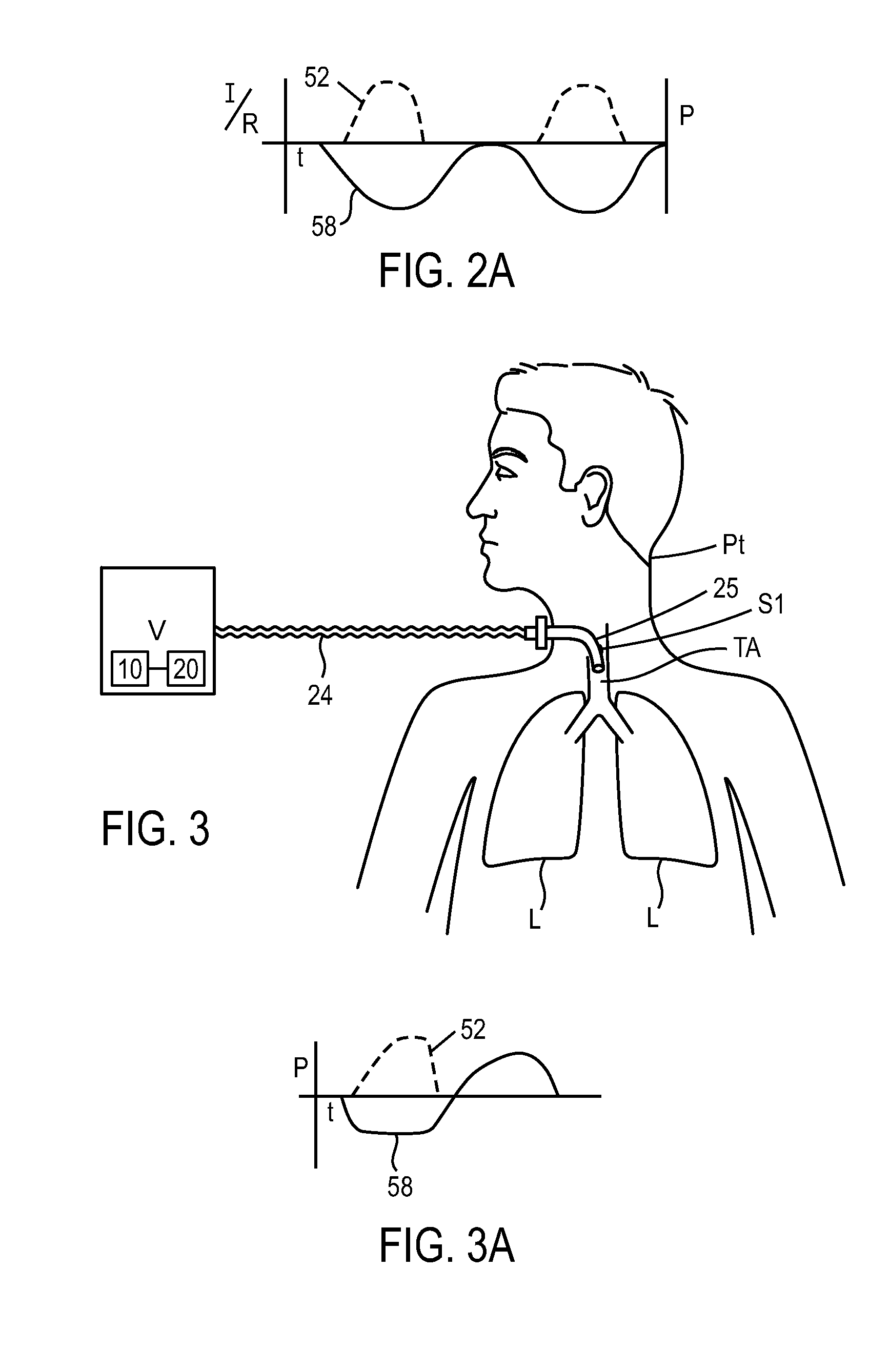Methods and devices for sensing respiration and controlling ventilator functions
a technology of respiration sensor and function, applied in the field of ventilation therapy, can solve the problems of poor synchrony, sensor during that time no longer measuring the respiration of the patient, but rather the activity of the ventilator,
- Summary
- Abstract
- Description
- Claims
- Application Information
AI Technical Summary
Benefits of technology
Problems solved by technology
Method used
Image
Examples
Embodiment Construction
[0090]FIG. 1 (prior art) describes a conventional ventilator system in which the breath sensor is in line with the ventilation gas being delivered in the breathing circuit. The Ventilator V delivers gas to the patient Pt through the ventilation gas delivery circuit, dual limb 21 and ventilation tube 25. A pressure tap 23 in series or in line with the ventilator gas flow senses a negative pressure created by a patient inspiratory effort. Alternatively, a flow sensor can be used in series with the ventilation circuit to detect when the patient inspires. The signal from the breath sensor is delivered to a ventilator control unit 20 in the ventilator V. As seen in FIG. 1A these in-series sensor systems measure the start of a patient inspiratory effort 63, but after the ventilator V is triggered to deliver a mechanical breath to the patient Pt, the sensor signal predominantly indicates the ventilator activity in the form of a ventilator gas delivery pressure tracing 52, and not the patie...
PUM
 Login to View More
Login to View More Abstract
Description
Claims
Application Information
 Login to View More
Login to View More - R&D
- Intellectual Property
- Life Sciences
- Materials
- Tech Scout
- Unparalleled Data Quality
- Higher Quality Content
- 60% Fewer Hallucinations
Browse by: Latest US Patents, China's latest patents, Technical Efficacy Thesaurus, Application Domain, Technology Topic, Popular Technical Reports.
© 2025 PatSnap. All rights reserved.Legal|Privacy policy|Modern Slavery Act Transparency Statement|Sitemap|About US| Contact US: help@patsnap.com



